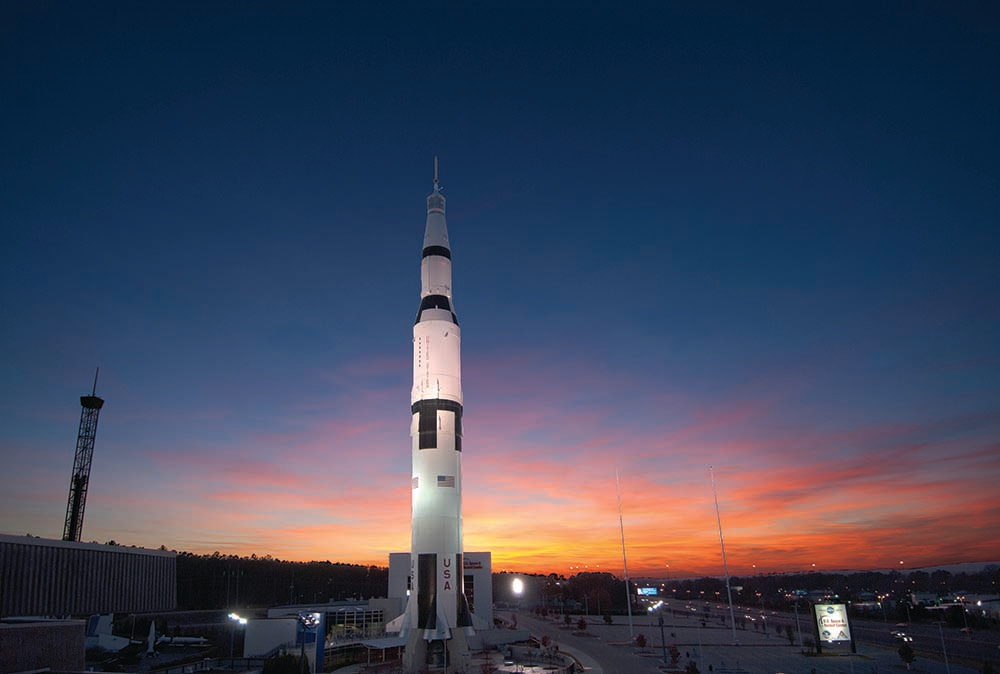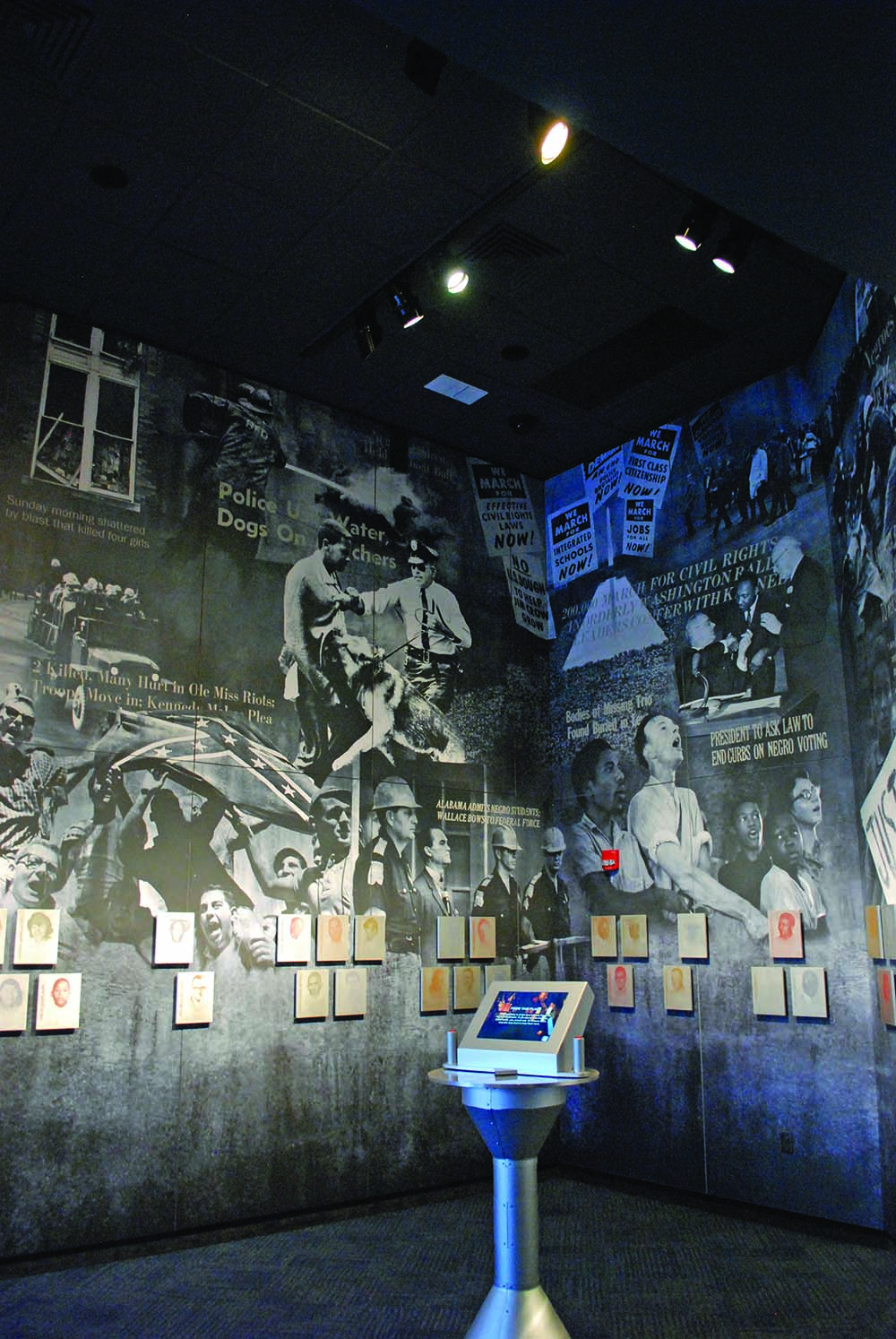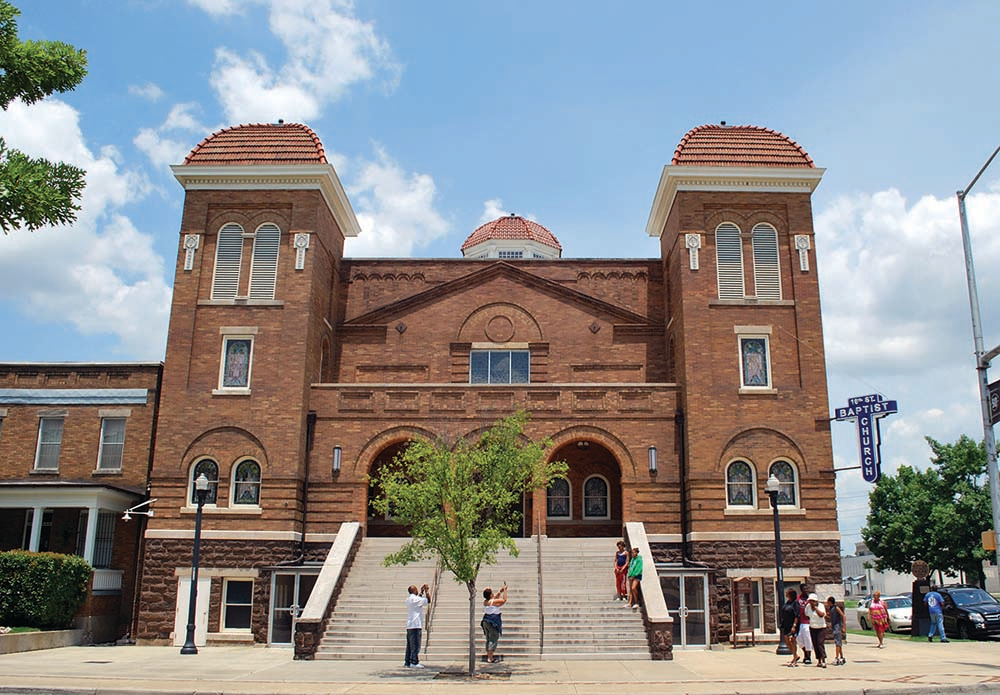
By Marilyn Jones
Travel to a time when Native Americans lived in a sprawling city, when European explorers mapped out the wilderness and when Alabama’s finest scientists helped make the race for space a reality. Time travel becomes a possibility at historic sites throughout Alabama and a journey you can take your children on.
Come along on as we “travel” to a few places of discovery and understanding.

Photo by Marilyn Jones
The first Alabamians
Centuries before the first Europeans set foot in what would become Alabama, Native Americans lived here. One place to discover this historic chapter is at Moundville Archaeological Site in Moundville. Dating to 1000 AD it grew to become what National Geographic coined as “The Big Apple of the 14th Century.”
Moundville is the second largest prehistoric archaeological site of its kind in North America, representing the best preserved Mississippian Indian ceremonial mound center.
The first European to arrive in the area was Spanish explorer Alonso Alvarez de Pineda in 1519 followed by Hernando de Soto and his forces in 1540. From the mid-16th century to the end of the 18th century, Spain, France and England vied for control of the region.
A settlement was founded by the French at Fort Louis de la Mobile in 1702. Soon after, the fort was destroyed by flooding and the location was moved to the current site in Mobile. Soon after, French and Canadian settlers began to arrive to farm the land.
Visit the Fort of Colonial Mobile for a better understanding of the establishment of European control. Costumed interpreters offer insight into military and civilian life during this time period.
Two other nearby forts protecting Mobile Bay were Fort Morgan and Fort Gaines.
Fort Morgan, built between 1819 and 1833, offers a visual history of a fortification that was active during four major wars. The Battle of Mobile Bay during the Civil War occurred just offshore. It was in those waters that Union Adm. David Farragut bellowed one of the more famous quotes in U.S. Naval history, “Damn the torpedoes, full speed ahead.”
From here take the Mobile Bay Ferry across the mouth of the bay to Dauphin Island to Fort Gaines.

Nearly completed in 1861, Southern troops seized the fort during the Civil War and completed its construction in 1862. The prospect of facing the powerful guns in Forts Gaines and Morgan kept Union forces at bay until August of 1864 and the infamous Battle of Mobile Bay.
Today costumed interpreters are outfitted in Confederate uniforms and civilian dress of the mid-1800s as they go about protecting the fort, and doing the day’s work in the blacksmith shop, bakery and homes.
Mooresville is the first town incorporated by the Alabama Territorial Legislature in 1818. The entire town is on the National Register of Historic Places. Centuries-old homes and buildings, gracious gardens and tree-shaded streets make this community of less than 60 residents an enjoyable place to visit.
The best way to experience Mooresville is on a guided tour which offers access to 1821 Stagecoach Tavern, 1839 Brick Church and 1854 Church of Christ. The 1840 Mooresville Post Office is open 7 to 9 a.m., Monday through Friday.
Gaineswood Plantation in Demopolis was completed just before the Civil War. It is considered one of the most significant remaining examples of Greek Revival Architecture in the state.
Designed by owner and architect Nathan Bryan Whitfield, it features exceptional features including domed ceilings, elaborate plasterwork and many original Whitfield family furnishings and objects. The five-acre site includes a formal gardens and plantation office.

Photo by Marilyn Jones
Civil War and beyond
The Civil War plays an important role in Alabama history. On Jan. 11, 1861, the State of Alabama seceded from the Union. The Alabama secession convention invited delegates of the other seceded states to meet in Montgomery to form the new Confederate nation. Delegates wrote a constitution for the Confederate States of America and Jefferson Davis was elected the Confederacy’s president. In late February 1861, Davis took the oath of office while standing on the portico of the State Capitol.
The First White House of the Confederacy was the executive residence of President Jefferson Davis and his family while the capitol of the Confederacy was in Montgomery until late May 1861. It was then moved to Richmond, Virginia. The house is completely furnished with original period pieces from the 1850s and 1860s.
Birmingham was born following the Civil War. With the area’s rich mineral resources (iron ore, coal, limestone) needed to make iron, industrialists built facilities. Sloss Furnace, a National Historic Landmark, is a relic of the industrial revolution. The pig iron producing blast furnaces operated from 1882 to 1971.
Today visitors can wander around the labyrinth of brick buildings, massive pipes and valves, stack pipes and stairways for a better understanding of the industry.

A new century
Moored in Mobile Bay, the USS Alabama is open daily for tours in Mobile.
During WWII, a crew of 2,500 men served on the 45,000-ton ship. The ship is famous for its role in leading the American Fleet into Tokyo Bay on Sept. 5, 1945. Nine Battle Stars for meritorious service were awarded the “Mighty A” during her brief three-year tenure as the “Heroine of the Pacific.”
Another important chapter in American history is the civil rights movement. In Montgomery, the Civil Rights Memorial commemorates those who died during the movement. Nearby, the Rosa Parks Museum remembers the brave actions of a young woman who was arrested for refusing to surrender her seat to a white person. A bus boycott resulted and lasted from December 1955 to December 1956. A United States Supreme Court decision declared the Alabama and Montgomery laws that segregated buses were unconstitutional.
Birmingham Civil Rights Institute and District is another excellent destination to start a conversation with children about civil rights. In addition to the museum, take a tour of the 16th Street Baptist Church where four members of the Ku Klux Klan planted a bomb under the church steps. Four little girls died in the blast.

The National Memorial for Peace and Justice and The Legacy Museum in Montgomery chronicles slave trade, racial terrorism, the Jim Crow South and the world’s largest prison system.
A proud part of Alabama’s history is its part in the space race. A visit to the U.S. Space and Rocket Center in Huntsville is a favorite with anyone who ever dreamed of space exploration.
Visit a national historic landmark — an authentic Saturn V rocket, one of only three in the world — located in the Saturn V Hall. The hall showcases NASA and Marshall Space Flight Center’s contributions to historic, current and future space exploration.
Learn about America’s Space Race and NASA’s plan to put man on the moon, the development of the space shuttle program and the International Space Station; get a glimpse of the future in commercial space ventures and the latest technological innovations.
Alabama has a lot to reflect on, be proud of and learn about. Make the state your weekend getaway or vacation destination.
For more information, visit https://alabama.travel; or call 800-252-2262.




